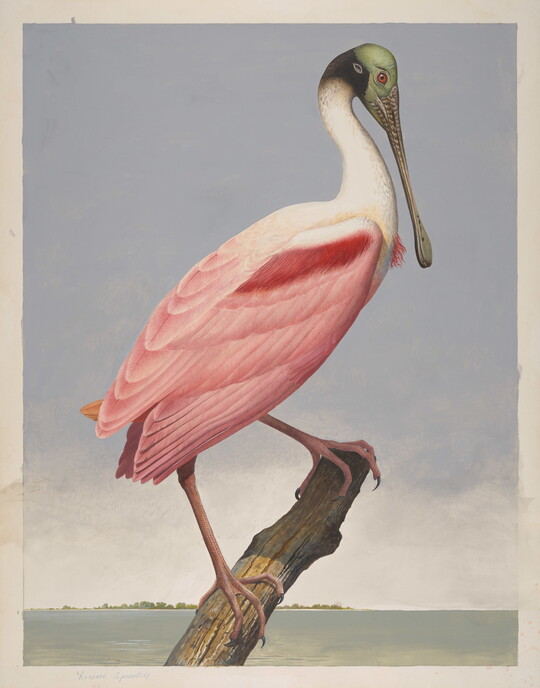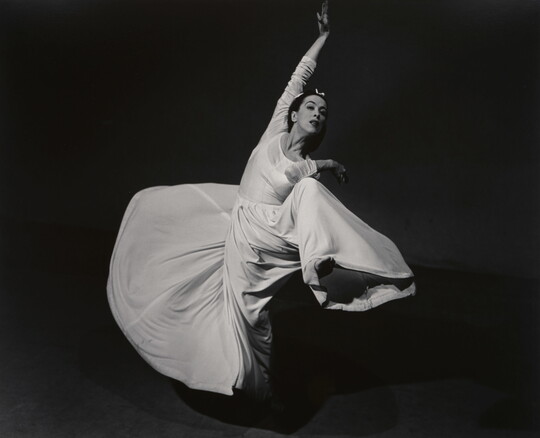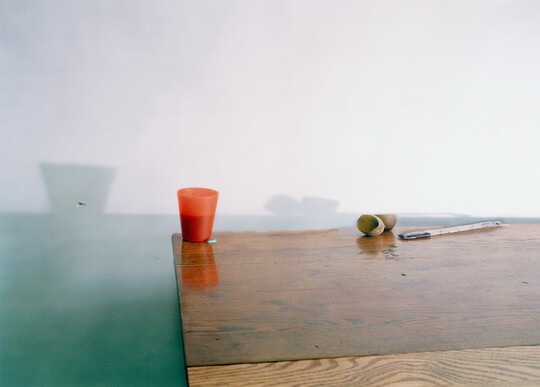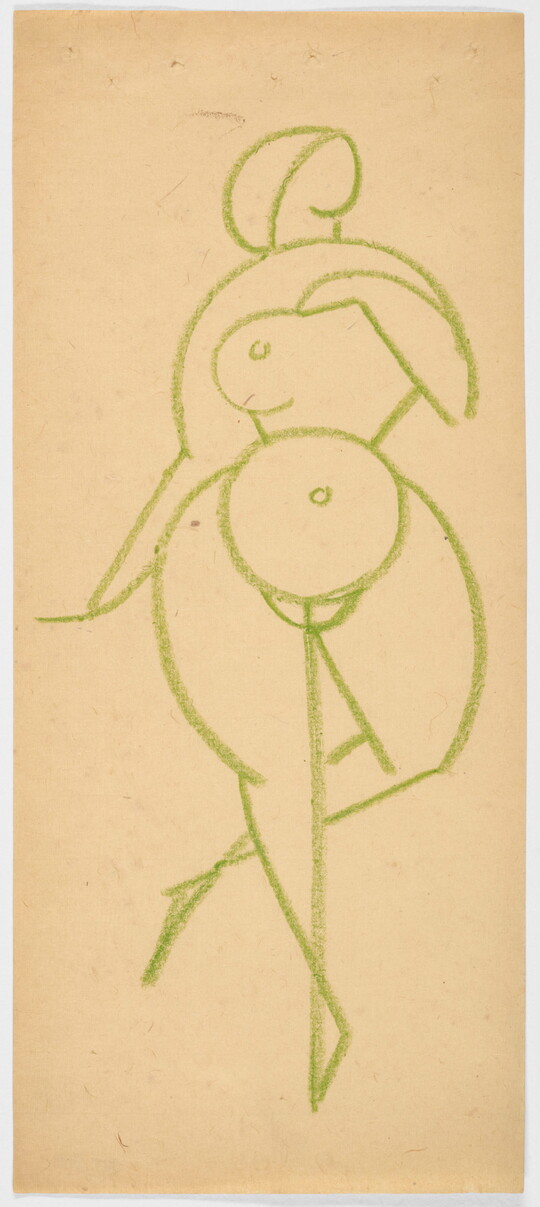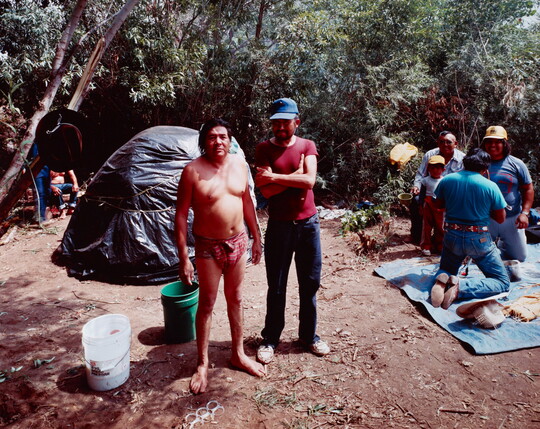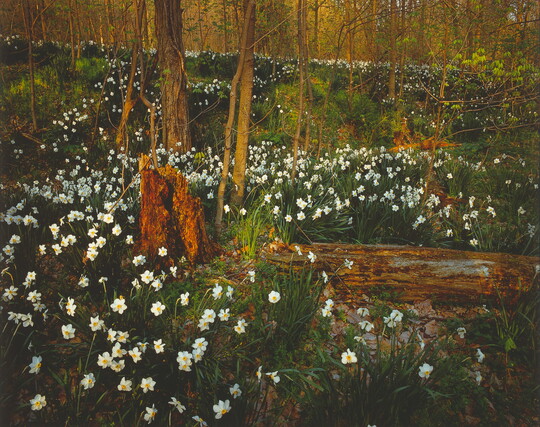


Artwork Images
Photo:
Controls
Cosmic Trees
Object Details
-
Date
1988
-
Object Type
Photographs
-
Medium
Dye destruction print
-
Dimensions
Image: 29 1/2 x 37 1/8 in.
Sheet: 30 x 40 in. -
Edition
AP/33
-
Inscriptions
Verso:
titled, u.c. in graphite: "Cosmic Trees"
dated, l.l. in graphite: 1988
numbered, l.c. in graphite: A.P./33
signed, l.r. in graphite: RG Ketchum
-
Credit Line
Amon Carter Museum of American Art, Fort Worth, Texas, Gift of Mr. and Mrs. Herb Belkin
-
Accession Number
P1997.54
-
Copyright
© 1988 Robert Glenn Ketchum
Additional details
Location: Off view
See more by Robert Glenn Ketchum
Tags
-
How is the archetypal theme of human versus nature depicted in works of art?
How might an artist be inspired by an environment or a setting?
What artistic choices does a photographer make when creating an image?
How is a photographic landscape different from landscapes depicted in other media?
How might a work of art contribute to the preservation or destruction of land or the environment?
How can art be used for advocacy?
What is a landscape?
-
What is the first thing you notice in this photograph?
What do you think about the colors? Why do you think the artist chose to portray such saturated colors? Do they seem true to nature?
If you could enter this work of art, what do you think you would feel? Smell? Taste? Hear?
What season do you think is pictured here? If we were to be here, what clothing might be the most comfortable? Would we need a big thick jacket with heavy-duty boots? Or maybe some athletic shorts and tennis shoes?
What are some things you would want to do if you were at this location?
How would this picture be different if there were businesses or residences in the background?
How would this work of art have been different if Ketchum had drawn or painted this landscape instead of photographing it? Or if he had made a sculpture?
This photograph was taken in 1988. Do you think the place still looks the same? How might it look different?
The artist, Robert Glenn Ketchum, once said:
“We can’t say that we want better lives for our children and ourselves then not become active in the legal and political system. Personal responsibility for lifestyle is only a single component of a complex puzzle. We must also advocate on behalf of the habitat that supports us, or it won’t continue to.”
What does that quote mean to you?
How can photography be used as a tool for advocacy?
How is this picture advocating for conservation of the environment? Why is it important to advocate for the conservation of the environment?
Is photography the most impactful media Ketchum could have used for advocacy? Why or why not?
-
Grades Pre-K–3
Have students brainstorm a list of their favorite outdoor places. Students will then select one place from their list and sketch it. For an extra challenge, have students remove as many human-created elements as possible.
Grades 4–8
Students will research endangered species protected by the National Oceanic Atmospheric Administration (NOAA) and/or spaces protected by the United States Environmental Protection Agency (EPA). Students will pick one place or species to research more in-depth. Then students will write one to two paragraphs explaining why it is important to protect that place or species and create an image that could help promote its protection.
Grades 9–12
Students will research endangered species protected by the National Oceanic Atmospheric Administration (NOAA) and/or spaces protected by the United States Environmental Protection Agency (EPA) as well as species/spaces which are not yet protected but are pending approval of protection. Students will pick one place or species to research more in-depth. Then students will create a protest sign to fight to protect their chosen species/space. Students may also choose to write a letter to a representative explaining the importance of protecting their chosen species/place.
Share Educator Resources
Amon Carter Disclaimer
This information is published from the Carter's collection database. Updates and additions based on research and imaging activities are ongoing. The images, titles, and inscriptions are products of their time and are presented here as documentation, not as a reflection of the Carter’s values. If you have corrections or additional information about this object please email us to help us improve our records.
Every effort has been made to accurately determine the rights status of works and their images. Please email us if you have further information on the rights status of a work contrary or in addition to the information in our records.
Related Works
-
Roseate Spoonbill, ca. 1980-85
Scott Gentling, Stuart Gentling
Graphite, opaque and transparent watercolor on paper
2018.26
-
Martha Graham - Letter to the World (Swirl), 1940
Barbara Morgan
Gelatin silver print
P1974.21.17
-
Navajo Monument Valley Tribal School near Goulding, Utah, 1986
Skeet McAuley
Dye destruction print
P1989.21.7
-
Untitled #52, 2002
Laura Letinsky
Dye coupler print
P2007.3
-
John Hopkins Inlet, Glacier Bay, 1988
Robert Glenn Ketchum
Dye destruction print
P1996.22.6
-
Untitled, 1970
Luchita Hurtado
Lithograph
1970.86
-
Green Nude, ca. 1920
Gaston Lachaise
Crayon on paper
2018.4
-
Apache Sweatlodge Ceremony, White River, Arizona, 1985
Skeet McAuley
Dye destruction print
P1989.21.5
-
CVNRA #397, 1987
Robert Glenn Ketchum
Dye destruction print
P1996.22.5


